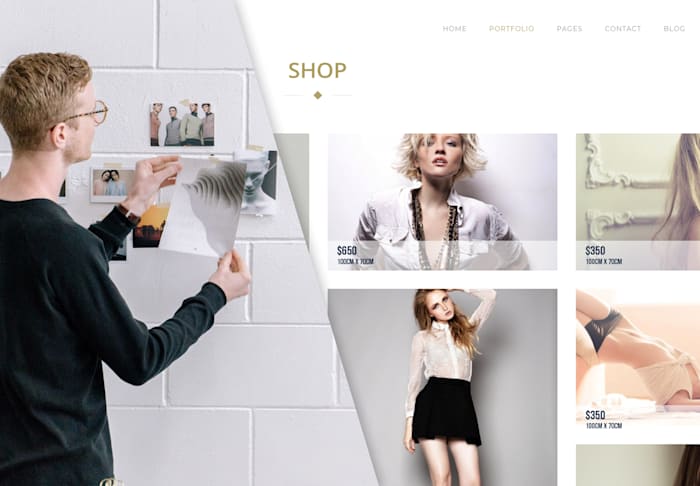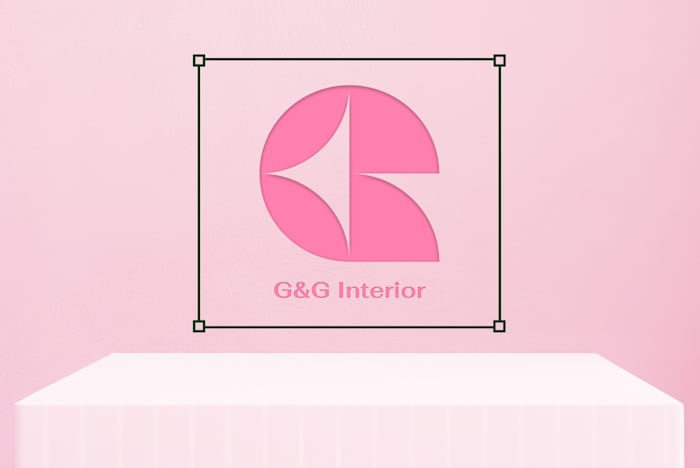What is branding?
A beginner's guide to branding
 August 17, 2020
August 17, 2020 9 minute reading
9 minute reading
Branding has become one of the most important aspects of business today, and if you’re an entrepreneur, there’s no way you can skip it.
But what exactly is branding? Branding can mean different things to different people, but the most important thing to remember is that branding is not an event, it’s not a logo, and it’s not just about advertising. A brand is so much more than that — it’s about the sum of every experience you have with a product or service, from inception to purchase to consumption to disposal.
Let's dig into it without further ado ...
Branding definition and meaning
What is branding
Branding can be a complex concept to wrap your head around. It’s also one of those concepts that, as soon as you do understand it, you can’t believe you didn’t get it before. At its core, it’s about making an emotional connection with people—with potential customers and business partners alike. If a brand becomes a part of their identity or lifestyle, people will buy from that brand again and again. Brand loyalty means long-term customer satisfaction and profitability for businesses. In terms of marketing, branding boils down to one thing: what are people going to say about your product or service? Your brand should evoke feelings in them when they think about how your company does things—and what customers experience on top of that.
What does branding mean
Branding is an intangible concept that as a whole helps the general public recognize a company, product, or individual by appealing to the feelings and emotions of their target customers.
Branding is the never-ending process of constantly managing your brand positioning to positively influence your consumer's perception. Companies and other organizations use brands to identify themselves, with logos and trademarks being two popular ways to do so. A brand's identity also often includes a company's reputation, because when people hear a company's name or see its logo, they associate that brand with whatever experiences they've had with it. They also may have associations based on what other people are saying about it (i.e., peer recommendations). Finally, some companies and individuals develop multiple brands for different products or services in an effort to be successful in more than one area—if you're only good at developing apps for iPhone but have a growing interest in Android, you could start building your Android app brand too.
Why is branding so important
Here are five reasons why branding is important for your business:
Branding sets the first impression
First impressions are everything, right?
The old rule of thumb is a first impression is made within the first seven seconds of meeting someone or seeing a website. That's how long it takes for humans to form a judgment.
A study by Princeton psychologists found it takes only a tenth of a second for a person to judge if someone else is trustworthy or not. That's for human faces, not brands, but whether it's seven seconds or a tenth of a second, the point is you don't have a lot of time.
A professional, clean, aesthetically pleasing brand identity can communicate trustworthiness in much less than seven seconds.
Branding makes a company more desirable
Before you say, "A brand alone cannot justify charging high prices," take a look at this.
Bottled water brand Acqua di Cristallo Tributo a Modigliani sells for $3,600 for a 750ml bottle. How on earth can they charge that much for water? It's simple: they built their brand on that concept.
Here's how the company justifies the price:
The water is sourced from three different regions: France, Fiji, and Iceland.
The packaging is beautiful and luxurious, designed by the world-renowned Fernando Altamirano, which makes the bottles a collectible item for design aficionados.
Each bottle contains 24k gold.
In some bottles, 5mg of gold is sprinkled into the water as well (for a higher price, of course).
If you're thinking $3,600 sounds like a lot for a bottle of water, would it surprise you to find out the company also sells one for $60,000? That one's bottle is made of 100% solid 24k gold. Not something you want to throw in the recycle bin after a sweaty workout, that's for sure.
The point is that brand is designed to be exclusionary. It's not bottled water that's going to sell at Walmart for $3 a dozen. You're not buying Acqua di Cristallo Tributo a Modigliani for hydration, you're buying it as a status symbol.
And it works as a brand because if there's anything rich people love the most, it's unnecessarily expensive status symbols, right?
As long as there's a market fit for your product, a well-targeted brand will allow you to charge whatever you please.
Branding fuels customer loyalty
Why do people keep buying iPhones? Apple aficionados line up for days in advance of a product launch to be one of the first on the planet with the latest one. But why?
It's not because it's the world's best phone. There are several comparable and arguably better devices out there.
It's less about the actual phone and more about the brand Apple has built. Apple as a whole has a cult following, but the iPhone has the strongest following of any Apple product. Everything in iOS has been designed with this intention.
Easy-to-use apps, a simple and modern design, a camera to make you feel like a pro photographer, and high-tech wizardry like Face ID. No fiddling with settings or crashing apps. A phone that's beautiful, easy to use, and works: that's the brand.
Once people use an iPhone, they're much more likely to stick with it as they upgrade to newer models. The same can be said for those who prefer Android. Once you identify with one brand more than the other, you've developed loyalty. It would take quite a big event to make you switch after owning, say, three iPhones in a row, right?
Branding fosters a company culture
Branding does more for your company than sell products. It's also powerful recruitment and HR tool.
Company culture is a set of beliefs and values that all employees share. Your brand defines that. An authentic brand, it needs to come from the inside out. Employees need to feel it in their everyday work lives and be proud to work there.
Why? Because employees talk. If your company says you value your people outwardly but inside your company is a mess of office politics, backstabbing, and low morale, customers are going to find out.
Let's look at two examples, both companies that claim to value their employees as their biggest asset.
Fashion retailer Forever 21 may be known for cheap-chic finds, but they're also known as one of the worst companies to work for in America. They've been hit with several lawsuits from former employees, including a class action in 2012 for detaining employees for extra hours without overtime pay and searching their bags for stolen items.
Alternately, Hilton has been ranked Fortune's Best Company to Work for two years straight. The hotel giant has been actively working to improve employee benefits, including parental leave policies and stock purchase programs for all employees, from housekeepers to the C suite. CEO Chris Nassetta has purposefully done this, saying, "We try to care for our people in the right way so they will care for our customers." How right he is!
Branding boosts your marketing strategies
A cohesive and easily recognizable brand identity helps drive sales and marketing efforts. For everything from ad creative to social media posts, using visual elements your customers will recognize immediately makes everything flow seamlessly.
What are you more likely to remember? An ad that uses familiar colors and elements for a brand you've seen before, or something completely new and unrelated to your knowledge of the brand so far?
It comes down to trust, too. Customers trust your brand through repetition. Do they recognize you in a new ad you're running? Boom. You're much more likely to convert them. It all works together.
In a nutshell, it’s a way to stand out from your competitors and effectively build your reputation. Branding adds personality to products, builds loyalty between customers and businesses, and provides direction to employees. But on an even more fundamental level, if you have a brand that people recognize, they are more likely to buy what you’re selling (or recommend it) because they trust you. This leads us to our next point...
Steps in building a brand
To create an effective brand, you’ll need to take a systematic approach. That means developing your brand strategy by working through these five steps:
Defining your ideal customer. To do so you must answer some key questions, such as: who do you serve? what are they like: educational background, careers, where they live, gender, income, interests, and hobbies, where do they shop, and what are their daily challenges?
Building or finding your audience. Start by creating a solid brand story that covers how and why your business started, demonstrates your capabilities, highlights what makes you unique, and shows how your product or service can benefit your potential customers. Then, you can leverage different tactics and channels to find and engage consumers, starting from creating content that speaks to your target customer's values, beliefs, and pain points, to engaging them through social media, specialized forums, or paid Ads.
Crafting a unique value proposition. A value proposition is just a fancy way of saying, "What makes you different and why should customers a) care about that, and b) buy from you?" Maybe you make the world's best smoothie or a completely new kind of fabric that apparel companies would kill to get their hands on. Whatever you do, why are you the best at it? You need to be able to clearly communicate that to your audience as part of your brand.
Identifying your unique promise of value to them. What do you believe in? What promise can you make to your target market that your brand will fulfill? An authentic brand doesn't only say they believe in certain values, they show it through actions. Starbucks, for example, has always been vocal about its support for ethical coffee farming and sustainability. Instead of just saying they believe in that, they show it through certifications on their coffees and listing the origin of each of those coffees. Additionally, they produce an annual Social Impact Report to keep their actions grounded in their values.
Choosing a look and feel that conveys what you offer. Hire a professional branding designer to create your logo and visual elements. Don't be afraid to consider multiple logo versions. Having an icon that can be separated from the wordmark (text) part of your logo can add long-term value. Think of McDonald's golden arches or Mastercard's red and yellow circle icons. Both are recognizable on their own without the company name included, thanks to the brand equity they've built over the years. Once you have a logo, color palette, and visual identity, ensure all materials use this for consistency (business cards, social media channels, app files or product packaging, brochures, etc).
Although some business owners can establish their brands overnight, it’s best to think of building a brand as a multi-month—even multi-year—process. Many entrepreneurs find it useful to meet with other people in their industry at least once every few months for brainstorming sessions about refining their identity and enhancing their image.
How has branding evolved over time
To understand branding as it evolved in North America, you actually need to understand a bit about post-WW2 history and economics. Let us explain...
Prior to the Second World War, products were purchased based on quality. If you could make something better than anyone else, people would buy yours.
After the war in 1950s America, industrialization changed all that. Increased use of machinery, automation, and wider access to materials and labor meant that as long as you had the money to create a product, you could probably make it just as good as the big companies like Kraft and Unilever.
Quality was still important, but it no longer became the only factor consumers used to make buying decisions.
Fast forward to today. Burger King and Wendy's both make hamburgers, for example. You could argue one tastes better than the other, but as a minimum measure of quality, they're both safe to eat and will satisfy your hunger. So it comes down to preference.
Another word for preference? Branding.
Take Target for example. Once thought of as a dingy discount retailer, Target is now in the top 10 brands in America. They brought in designer brands for exclusive collaborations to appeal to a higher-income demographic. And in 1999, they added in-store Starbucks kiosks.
The strategy worked. "Going for a Target run" is a household phrase for most middle-class American moms, a core demographic for the store, and annual revenues have soared year after year from $52 billion in 2005 to over $78 billion in 2019.
Nowadays, if you're not appealing to the emotions of your target customers, you're leaving money on the table. A lot of it.
Branding FAQs
What are the elements of branding?
Branding involves more than just a name and logo. A strong brand is built on three key pillars: products or services, marketing strategies, and design. While these elements are critical to success, it's important to keep them balanced; focusing too much on one of these pillars can cause issues later. Before you begin to create your company's brand, it's worth taking some time to consider each of these three pillars and how they relate to your business goals. When you do that you’ll be able to start thinking about how your brand should be positioned within its market niche.
What is brand equity?
Your equity is kind of like your whole brand rolled together. Simply put: you can charge more when you have high brand equity. All the effort you put into your storytelling, product quality, customer service, look and feel, values, showing your capability, building trust, etc -- all that work pays off after weeks, months and years.
What does that mean?
Think of it like a home mortgage. The home is worth $500,000. You pay $2,000 a month for 25 years. Over the years as you pay it off, you build equity that will result in a nice profit when you sell it.
A brand works the same way. It literally builds financial value over time.
Pretty cool, right?
Take Coca-Cola, for example. They are one of the world's highest equity brands with a value of over $80 billion. When you are given a choice between a Coke and a no-name brand soda, which would you pick? Be honest, you'd pick the Coke.
The reason you'd pick it is due to 128 years of history (and good marketing). That's equity building up over time.
Of course, branding isn't a cash cow waiting for you to click the "free money" button. The process of building brand equity means you actually need to deliver on that value proposition by being good at what you do.
What is brand identity?
Your brand identity is anything you can see.
For example, the email marketing platform Mailchimp is known for its black and white illustrations used throughout its website and social media channels. The graphics are used for icons and to quickly explain technical concepts in a visual way. Even though it's not their logo, it's still part of their brand identity.
Branding identity can include:
Logo
Colors
Typography and fonts
Visual elements, like illustrations or photography
Icons
What is brand positioning?
Brand positioning means that you are able to stand out from your competitors. You need to position yourself in a way that differentiates you from others and allows you to establish your brand image as a leader, innovator, or expert within your market.
Are you the fast-food version of what you do, or the Michelin restaurant version? There's nothing wrong with either of these options—there's a market for both—but you need to know where you fit in amongst your competitors.
Let's say you're a fitness studio. Do you do $10 boot camp sessions or charge hundreds of dollars for a monthly membership? The target market for each of those is going to be very different.
What are the types of branding?
There are many types of branding and they can be categorized into 3 main groups, which are: Personal Branding Business Branding Consumer Branding.
Personal Branding. It is related to you as a person or a professional in any area of your expertise that you want to represent about yourself.
Business Branding. It relates to building and establishing a corporate identity for a company, product, or service that has been launched into the market.
Consumer Branding. This type of brand defines what consumers feel, think and do after interacting with your business identity, offering or campaign. The main focus of consumer branding should be on the key target audience as it is who is going to purchase your brand's product or service in the first place.
Conclusion
Your brand is your first impression on a customer. When they walk in, call in or click in, they form an opinion of how trustworthy your company is within seven seconds.
How do you earn that trust so quickly?
A professional image: logo, website design, colors, and typography.
Content that speaks to your target customer's values, beliefs, and pain points.
An experience that is purposefully designed to make them feel important and safe (especially when buying online).
Your brand is a powerful tool to connect you to your audience and grow from unknown to household names.
But that's not all. A strong brand also:
Defines and drives your internal company culture
Makes your marketing more effective
Justifies premium pricing strategies





